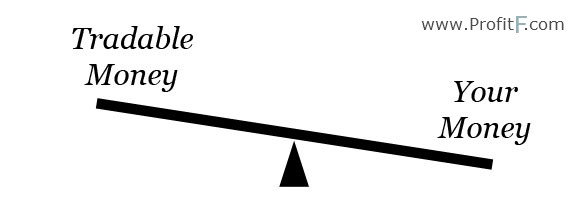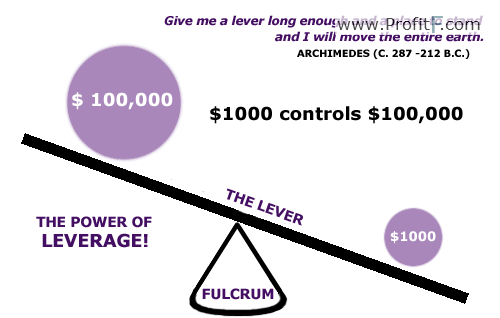Forex Leverage Definition, Introduction to Leverage, Forex trading leverage explained, Forex what is leverage?

Leverage is an important element of risk management in trading and is one of the basic blocks towards the long term success in forex. Most of you might have heard how leverage can be a double edged sword. While it can help you to maximize your profits with only a small capital, leverage can equally decimate your account if not managed properly. Most forex brokers today advertise the high leverage that they offer. Some even go as high as 1:1000 and sadly most new forex traders tend to fall for this. Without a proper understanding of leverage, randomly using a leverage ratio can be disastrous to your trading equity. Trading on leverage is also referred to as margin trading, or trading on margin.
What is “Margin” ?
What is leverage?
Leverage is defined as the use of exponentially increasing (read as inflating) your capital in order to make substantial profits from fluctuations in the markets. Or in other words, using a small amount on margin and leveraging it to trade higher amounts.
Leverage is usually denoted in ratios. Ex: 1:1, 1:100, 1:500 and so on. It can also be represented in the form of 100:1, 500:1 and so on, which means the same. This ratio is nothing but the amount you can leverage. A 1:1 leverage is the same as trading with no leverage at all, while 1:100 leverage is increasing your trading capital 100 times. So if you had a trading capital of $500 and used 1:100 leverage, you can practically trade up to $500,000.
Why use leverage if it is risky?
Leverage is used in order to trade higher contract sizes without having to put up the entire margin amount as collateral. A good way to understand leverage is to take the example of purchasing property. Assuming that you wanted to buy a house worth $500,000 and you didn’t have that much of money upfront, you would approach a bank for a loan. Based on your monthly salary, the bank agrees to purchase the property for you while you continue paying monthly mortgages. This simple action is nothing but leverage. You basically leverage your monthly salary in order to purchase a property that would otherwise be beyond your reach.
Leverage, contrary to popular opinion can be your friend if used wisely and in fact is essential if you want to make any profits in the first place.
EXAMPLE:
If you had a trading capital of $10 000 and you choose a 1:1 leverage, the max you can trade is a one mini lot (0.1 lot) (Lot size definition) but that would leave you with no margin amount. On the contrary, if you used 1:100 leverage and want to trade one mini lot, you would simply use 1% of your capital, leaving you with enough capital to cover any risks to your trade.
Refer to the table below to see an example of trading with and without leverage.
| With Leverage | Without Leverage | |
| Equity | $10000 | $10000 |
| Leverage | 1:50 | 1:1 |
| Max Trade Size | 500,000 (5 standard lots) | 10,000 (1 mini lot) |
| 10 Pips Profit | $500 | $50 |
| 10 Pips Loss | -$500 | -$50 |
| Balance | $10500/$9500 | $10050/$9950 |
Another reason for using leverage is to make profits quickly and ones which are significant. For example, if you bought just 1000 contracts buying EURUSD and the price went up by 2 pips, the profit you would make on this trade would be $0.2. Now this isn’t that much of a profit. Now imagine if you used a leverage of 1:100, you would be able to trade higher contracts. So for example a mini lot would give you a $2 profit for a 2 pip move and a $20 profit if trading a standard lot on margin.
The following table illustrates how leverage can increase your trading required margin or equity:
| Equity (Required Margin) | Leverage | Amount Traded |
| $100 | 1:500 | $50,000 |
| $500 | 1:200 | $100,000 |
| $1000 | 1:100 | $100,000 |
| $5000 | 1:50 | $250,000 |

What leverage should I choose?
While the answer to the above question is very personal and subjective and depends on your trading style and risk style, staying within the range of 1:10 – 1:50 with an average equity of $50,000 should be fair. Alternatively, for deposits around the $5000 range, using a 1:100 or 1:200 leverage should be acceptable so long as you have your risk parameters in check and are a disciplined trader. Of course, if you have more capital ($100,000) or more, you could safely trade on a 1:1 leverage thus reducing your exposures brought about by using leverage.
yes
Hi! Does anyone know why someone would use 1:1 leverage if it is the same as trading with no leverage at all?